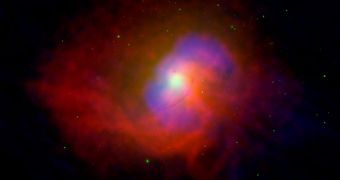Physicists propose that black holes can be used as an aid in modeling the behavior of electrons flowing inside modern unconventional superconductor materials. The thing about these materials is that they tend to start off as insulators, and then become superconducting.
A very precise set of conditions is necessary for this, experts say. Even if the steps needed to force the change are known, physicists still have only a minimal knowledge of how superconductivity arises.
In the new investigation, researchers turned their attention to materials known as Mott insulator. This is the state in which new superconductors exist before they are modified to allow for unencumbered electron flow through them.
In other words, it is an insulating state of copper-oxide materials. It was named after Sir Neville Mott, who was the first to propose this state exists. A Mott insulator is defined by the strong repulsions that develop between electrons flowing through it.
“The context of this problem is high-temperature superconductivity. One of the great unsolved problems in physics is the origin of superconductivity in the copper oxide ceramics discovered in 1986,” explains physics professor Philip Phillips.
The physics behind Mott insulators are still hazy, and this is why experts decided to use string theory and quantum mechanics in a bid to make more sense of it, Daily Galaxy reports.
The question that prompted the study was if its “possible to devise a theory of gravity that mimics a Mott insulator?” Phillips and his team demonstrated that is indeed the case if you use a system featuring a charged black hole in curved spacetime as a starting point.
Essentially, what the group did was model the behavior of electrons moving in such a space. The simulation highlighted two features that normally occur in high-temperature superconductors.
The first was the presence of a barrier for electron motion in the Mott state, and the second one was the regime in which the electrical resistivity evolved as a linear function of temperature.
“The next big question that we must address, is how does superconductivity emerge from the gravity theory of a Mott insulator?” Phillips says.
Details of the new investigation were published in the latest issue of the esteemed scientific journal Physical Review Letters.
The work was funded by the US National Science Foundation (NSF), the Center for Emergent Superconductivity and the Department of Energy (DOE) Energy Frontier Research Center.

 14 DAY TRIAL //
14 DAY TRIAL //